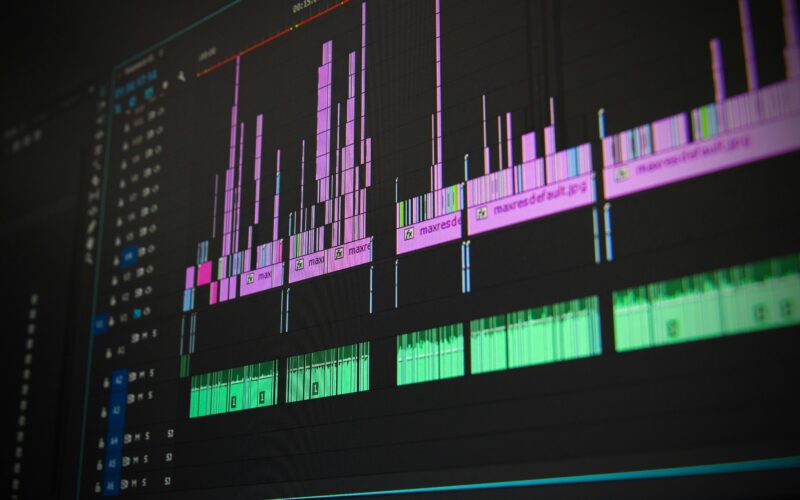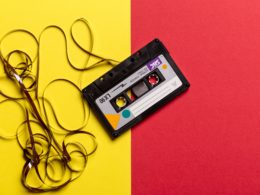INTRODUCTION
With the rise of Electronic Dance Music (“EDM”)1[1]Rachel Narozniak, Global Dance Music Industry Valued at $11.8 Billion, Per 2024 IMS Business Report, BEAT PORTAL (Apr. 25, 2024), https://www.beatportal.com/articles/261043-global-dance-music-industry-valued-at-11-8-billion-per-2024-ims-business-report. and advancements in music production technology, remixes have become an integral part of the modern music industry.2[2]The Need for Fair Use Guidelines for Remixes, NATIONAL TELECOMMUNICATIONS AND INFORMATION ADMINISTRATION (Feb. 26, 2016) (“User-generated content has become a hallmark of the Internet and ‘remixes’ are part of this growing trend”), https://www.ntia.gov/blog/2016/need-fair-use-guidelines-remixes. Unlike past decades, when music production required expensive equipment and record labels for distribution, today, amateur producers (colloquially known as “Bedroom DJs”) can download samples, produce a remix, and distribute their work at little to no cost.3[3]Robin Ambroise-Thomas, Remix Culture – History and Future of an Art Form, BRIDGE.AUDIO (July 26, 2023), https://www.bridge.audio/blog/remix-culture-history-and-future-of-an-art-form/.
Initially, music streaming services like SoundCloud fostered a vibrant community of creatives sharing largely non-commercial works. However, increasing industry pressures and overly broad enforcement of copyright protection have led streaming services to crack down on remixes.4[4]Krystal Rodriguez, SoundCloud Users Still at Risk of Takedowns Despite New Licensing Agreement, VICE (Dec. 15, 2016), https://www.vice.com/en/article/soundcloud-mixes-takedown-clarification-blog-post/. As Kygo, a prominent DJ and producer, explained, “The way that I did it would be impossible to do today. I was posting on SoundCloud, and I was doing some unofficial remixes. And now with copyright it’s way stricter—streaming is a different world.”5[5]Joseph Bullmore, At Home with Kygo, GENTLEMAN’S JOURNAL (accessed Apr. 22, 2025), https://www.thegentlemansjournal.com/article/at-home-with-kygo-dj-interview/.
Recognizing the prevalence of remixes and the related legal issues, the United States Department of Commerce’s Internet Policy Task Force (“IPTF”) commissioned a multi-year review of the legality of remixes.6[6]DEP’T OF COM. INTERNET POL’Y TASK FORCE, White Paper on Remixes, First Sale, and Statutory Damages (2016), https://www.ntia.doc.gov/files/ntia/publications/white_paper_remixes-first_sale-statutory_damages_jan_2016.pdf. This review culminated in a 2016 Report (the “2016 Report”) that highlighted the legal ambiguity surrounding remixes and considered various solutions.7[7]Id. Nearly a decade later, this problem remains largely unresolved, while EDM and remixes have only increased in popularity.
This article argues that current copyright laws are ineffective at regulating remixes, resulting in uncertainty for music artists, producers, and copyright holders. First, this article explains the unpredictable nature of fair use as applied to remixes. Next, it describes the takedown notice procedures provided by the Digital Millennium Copyright Act (the “DMCA”)8[8]17 U.S.C. § 512. and explains the problematic incentives that it creates. Finally, it proposes potential solutions, weighing the interests and concerns of relevant stakeholders.
I. COPYRIGHT LAW AND FAIR USE
Copyright protects original works of authorship, such as music and visual art, to encourage creative expression.9[9]17 U.S.C. § 102. To be most effective, copyright law must protect creators’ rights while promoting public access to information and culture.10[10]DEP’T OF COM., supra note 6 at i. (“A healthy copyright system strikes important balances between rights and exception”). Copyright holders have several exclusive rights to their work, including the exclusive right to prepare derivative works based on the original.11[11]17 U.S.C. §106(2). Remixes are generally considered derivative works, meaning that copyright holders have the exclusive right to remix their works.12[12]DEP’T OF COM., supra note 6 at 7. (“In many cases, these remixes will constitute derivative works”).
However, fair use provides an exception to copyright holders’ exclusive rights to their works. If a given use of a copyrighted work is fair, the user making the remix (the “remixer”) is not liable for copyright infringement and does not need permission from the copyright holder.13[13]17 U.S.C. §107. To determine fair use, the Copyright Act sets forth four factors that require “judicial balancing, depending upon relevant circumstances.”14[14]Google LLC v. Oracle Am., Inc., 593 U.S. 1, 19 (2021). These factors are:
(1) the purpose and character of the use, including whether the use is commercial15[15]See for example, DEP’T OF COM., supra note 6 at 7 (discussing the potentially significant distinction between amateurs who engage in noncommercial self-expression and professionals who remix for profit). or educational;
(2) the nature of the copyrighted work;
(3) the amount and substantiality of the portion used; and
(4) the effect of the use upon the potential market.16[16]17 U.S.C. §107.
Courts balance these fair use factors on a case-by-case basis, making the legality of many remixes unpredictable.17[17]U.S. COPYRIGHT OFFICE, Fair Use Index, https://www.copyright.gov/fair-use/ (last updated Feb. 2025).. As the 2016 Report explained, “many remixes will qualify as fair uses while others will not.”18[18]DEP’T OF COM., supra note 6 at 10. Due to this uncertainty, it is often difficult to determine the legality of remixes absent costly litigation.19[19]Id. (“Some [remixes] will fall into a gray area where it is difficult to determine their status without potentially costly litigation”).
II. DIGITAL MILLENNIUM COPYRIGHT ACT
In 1998, Congress passed the Digital Millennium Copyright Act (“DMCA”) to adapt copyright law for the Internet Age.20[20]U.S. COPYRIGHT OFFICE, The Digital Millennium Copyright Act, https://www.copyright.gov/dmca/ (last visited Apr. 10, 2025). Title II of the DMCA struck a compromise between copyright holders and online service providers (“OSPs”) such as SoundCloud and YouTube21[21]Jennifer M. Urban and Laura Quilter, Efficient Process or Chilling Effects – Takedown Notices Under Section 512 of the Digital Millennium Copyright Act, 22 Santa Clara High Tech. L.J. 621 (2006).
Available at: https://digitalcommons.law.scu.edu/chtlj/vol22/iss4/1.
by creating a speedy process for copyright holders to take down material while granting OSPs immunity from copyright infringement liability.22[22]This immunity is crucial for OSPs, as without it, they could be held liable for infringing material uploaded by their users. Further, in a practical sense, copyright holders often prefer suing OSPs like YouTube or SoundCloud over individual users because these companies have greater financial resources to go after or deeper pockets. The DMCA grants OSPs immunity from liability for any infringing material on their platform as long as they remove allegedly infringing material upon receipt of notice from the copyright holder.23[23]17 U.S.C. § 512(c)(1)(C) (“upon notification of claimed infringement … responds expeditiously to remove, or disable access to, the material that is claimed to be infringing”). Additionally, OSPs are not liable to remixers for removing their remixes “regardless of whether the material or activity is ultimately determined to be infringing.”24[24]17 U.S.C. § 512(g)(1). As a result, OSPs are strongly incentivized to comply with copyright holders’ takedown requests even when the material in question may not actually violate copyright law.
To prevent copyright holders from abusing the takedown process, the DMCA includes a provision imposing liability for materially misrepresenting a belief that material is infringing.25[25]17 U.S.C. § 512(f). Applying this provision, the Ninth Circuit held in Lenz v. Universal Music Corp. that a copyright holder must first consider whether the use qualifies as fair use before issuing a takedown notice.26[26]Lenz v. Universal Music Corp., 815 F.3d 1145, 1148 (9th Cir. 2016). However, in practice, this requirement does little to prevent such abuses because copyright holders only need to assert a “good-faith belief” that the use is not fair to avoid liability.27[27]Id. at 1153. Thus, even if a court disagreed with the OSP’s belief, the OSP would have met its burden to avoid liability.28[28]Id. (“This inquiry lies not in whether a court would adjudge the video as a fair use, but whether Universal formed a good faith belief that it was not.”)
Ultimately, the unpredictability of fair use, OSPs’ strong incentives to comply with takedown notices, and the low threshold for copyright holders to issue takedown notices create a chilling effect—allowing copyright holders to “obtain a far broader protection for their works than copyright law actually affords.”29[29]Jennifer M. Urban and Laura Quilter, Efficient Process or Chilling Effects – Takedown Notices under Section 512 of the Digital Millennium Copyright Act, 22 Santa Clara High Tech. L.J. 621 (2006).
Available at: https://digitalcommons.law.scu.edu/chtlj/vol22/iss4/1.
III. SOLUTIONS
Given the legal uncertainty of remixes, the standard practice among major labels has become to license every sample used in songs, even if doing so may be unnecessary.30[30]Peter S. Menell, A Remix Compulsory Licensing Regime for Music Mashups, in The Routledge Companion to Copyright and Creativity in the 21st Century (Michelle Bogre & Nancy Wolff eds., 2020), https://ssrn.com/abstract=3652693, at 12. (“unless samples were cleared, labels would not release the new projects.”). However, this approach is untenable for Bedroom DJs, as licensing is prohibitively expensive, and merely getting licensing requests answered is difficult without a major label or well-connected attorney.31[31]Id. at 12–13. Instead, the result has been an inefficient and adversarial system with remixers developing workarounds and copyright holders refining their detection methods. For example, one DJ explained a technique to avoid takedown detection by including several minutes of silence at the beginning or end of a track.32[32]Interview with an anonymous DJ and producer, (Feb. 11, 2025). This current landscape is inefficient as copyright holders invest substantial resources to improve detection and issue takedowns while missing out on potential revenue from a growing market. Further, the current system limits remixers creatively and alienates them from mainstream platforms. To address these issues, this section introduces several solutions, including guidelines to copyright law, substantive changes to the law itself, and market-based innovations.
a. Remix Copyright Guidelines
One solution discussed in the 2016 Report was the creation of remix-specific fair use guidelines.33[33]DEP’T OF COM., supra note 6 at 27. Theoretically, this could help by providing remixers with more clarity on the legality of their works while limiting copyright holders’ ability to abuse DMCA takedown procedures. However, guidelines may not be practical given the fact-specific nature of fair use analysis. As the United States Copyright Office explained, “There is no formula to ensure that a predetermined percentage or amount of a work—or specific number of words, lines, pages, copies—may be used without permission.”34[34]U.S. COPYRIGHT OFFICE, Fair Use Index, https://www.copyright.gov/fair-use/ (last visited Mar. 3, 2025). With no two remixes being the same, crafting workable guidelines would be challenging and likely ineffective in providing answers for remixers.
b. Compulsory License Regime for Remixes
A more promising solution discussed in the IPTF’s 2016 Report involved adopting a framework based on covers.35[35]DEP’T OF COM., supra note 6 at 25. A cover is functionally very similar to a remix, except that covering artists re-record songs rather than modify original recordings as remixers do.36[36]Cover Song Licensing Explained, LABEL ENGINE (July 16, 2024), https://label-engine.com/news/cover-song-licensing/. Covers are legal under current copyright law with a compulsory license, meaning that copyright holders cannot refuse to grant covering artists licenses, but covering artists must pay the required royalties.37[37]Music Sampling Rights: What You Need to Know, ROMANO LAW (Oct. 14, 2022), https://www.romanolaw.com/music-sampling-rights-what-you-need-to-know/. Law professor and legal scholar Peter Menell advocates for a remix compulsory license regime, arguing that doing so would provide remixers with a predictable copyright landscape while ensuring that copyright holders are fairly compensated.38[38]Menell, Supra note 30. Such a regime would enable remixers to legally create and distribute their works without prohibitive transaction costs or the risk of costly litigation.
Opponents of this solution argue that adopting a remix compulsory license regime would deprive copyright holders of the “right to say no” to a remix of their song.39[39]DEP’T OF COM., supra note 6 at 18. However, under current law, copyright holders have no such right to refuse covers. Further, many remixers already use these existing laws to make their remixes using a compulsory license. In an interview with Zack Martino, professional DJ and producer, he explained this process: “If I were to remix it on my own without them knowing and put it on SoundCloud, I could potentially get a copyright [takedown]. There are ways around it by not using the original vocal and getting someone to cover the song. And then you would just need a [compulsory] license.”40[40]Interview with Zach Martino, DJ and Producer, (Feb. 12, 2025). Thus, a compulsory remix license regime would align with current practices and enable remixers to produce their works while ensuring fair compensation for copyright holders.
c. New Remix DSP
Finally, a novel solution is to establish a first-of-its-kind remix-focused digital service provider (“DSP”)41[41]DSP means Digital Service Provider. Some prominent DSPs include Spotify and Apple Music. —a platform specifically designed for legally hosting and distributing remixes. This would achieve a result similar to the remix compulsory license regime without requiring any changes to current copyright law. To do so, the new DSP would need to obtain licenses from copyright holders to distribute derivative works of their originals. Ideally, every copyright holder would opt in, much like how nearly all copyright holders assign their public performance rights to performing rights organizations, such as ASCAP and BMI.42[42]Musicians and Income in the Digital Age, U.S. COPYRIGHT OFFICE, https://www.copyright.gov/music-modernization/educational-materials/musicians-income.pdf (last visited Apr. 10, 2025). If this were achieved, any remix could be legally shared on the new DSP.
By joining the platform, copyright holders would earn royalties on streams of remixed versions of their songs. This financial incentive could encourage widespread participation as copyright holders would be able to earn additional revenue and capitalize on the growing market for remixes. Moreover, copyright holders may benefit from a designated remix platform as it would likely reduce the prevalence of unlicensed remixes on mainstream DSPs like Apple Music and Spotify.
The platform would offer remixers a place to legally share their works without negotiating licensing agreements directly with copyright holders or facing litigation risks. This would enable remixers to prioritize creativity without the burden of legal uncertainty. Moreover, remixers would benefit from having access to an audience specifically interested in remixes. The success of this novel approach primarily hinges on convincing copyright holders that they stand to gain financially by participating.
IV. CONCLUSION
Current copyright law’s treatment of remixes contradicts its fundamental purpose of facilitating creation. As music production technology advances and music evolves, our legal framework must adapt to provide clarity and encourage creative expression while safeguarding the rights of original creators. Ultimately, it is time to remix our out-of-tune copyright law.
Written by: Ian Samide
Ian is a 2026 J.D. Candidate at Brooklyn Law School.
[1] Rachel Narozniak, Global Dance Music Industry Valued at $11.8 Billion, Per 2024 IMS Business Report, Beat Portal (Apr. 25, 2024), https://www.beatportal.com/articles/261043-global-dance-music-industry-valued-at-11-8-billion-per-2024-ims-business-report.
[2] The Need for Fair Use Guidelines for Remixes, National Telecommunications and Information Administration (Feb. 26, 2016) (“User-generated content has become a hallmark of the Internet and ‘remixes’ are part of this growing trend”), https://www.ntia.gov/blog/2016/need-fair-use-guidelines-remixes.
[3] Robin Ambroise-Thomas, Remix Culture – History and Future of an Art Form, Bridge.Audio (July 26, 2023), https://www.bridge.audio/blog/remix-culture-history-and-future-of-an-art-form/.
[4] Krystal Rodriguez, SoundCloud Users Still at Risk of Takedowns Despite New Licensing Agreement, Vice (Dec. 15, 2016), https://www.vice.com/en/article/soundcloud-mixes-takedown-clarification-blog-post/.
[5] Joseph Bullmore, At Home with Kygo, Gentleman’s Journal (accessed Apr. 22, 2025), https://www.thegentlemansjournal.com/article/at-home-with-kygo-dj-interview/.
[6] Dep’t of Com. Internet Pol’y Task Force, White Paper on Remixes, First Sale, and Statutory Damages (2016), https://www.ntia.doc.gov/files/ntia/publications/white_paper_remixes-first_sale-statutory_damages_jan_2016.pdf.
[7] Id.
[8] 17 U.S.C. § 512.
[9] 17 U.S.C. § 102.
[10] Dep’t of Com., supra note 6 at i. (“A healthy copyright system strikes important balances between rights and exception”).
[11] 17 U.S.C. §106(2).
[12] Dep’t of Com., supra note 6 at 7. (“In many cases, these remixes will constitute derivative works”).
[13] 17 U.S.C. §107.
[14]Google LLC v. Oracle Am., Inc., 593 U.S. 1, 19 (2021).
[15] See for example, Dep’t of Com., supra note 6 at 7 (discussing the potentially significant distinction between amateurs who engage in noncommercial self-expression and professionals who remix for profit).
[16] 17 U.S.C. §107.
[17] U.S. COPYRIGHT OFFICE, Fair Use Index, https://www.copyright.gov/fair-use/ (last updated Feb. 2025).
[18] Dep’t of Com., supra note 6 at 10.
[19] Id. (“Some [remixes] will fall into a gray area where it is difficult to determine their status without potentially costly litigation”).
[20] U.S. COPYRIGHT OFFICE, The Digital Millennium Copyright Act, https://www.copyright.gov/dmca/ (last visited Apr. 10, 2025).
[21] Jennifer M. Urban and Laura Quilter, Efficient Process or Chilling Effects – Takedown Notices Under Section 512 of the Digital Millennium Copyright Act, 22 Santa Clara High Tech. L.J. 621 (2006).
Available at: https://digitalcommons.law.scu.edu/chtlj/vol22/iss4/1.
[22] This immunity is crucial for OSPs, as without it, they could be held liable for infringing material uploaded by their users. Further, in a practical sense, copyright holders often prefer suing OSPs like YouTube or SoundCloud over individual users because these companies have greater financial resources to go after or deeper pockets.
[23]17 U.S.C. § 512(c)(1)(C) (“upon notification of claimed infringement … responds expeditiously to remove, or disable access to, the material that is claimed to be infringing”).
[24] 17 U.S.C. § 512(g)(1).
[25] 17 U.S.C. § 512(f).
[26]Lenz v. Universal Music Corp., 815 F.3d 1145, 1148 (9th Cir. 2016).
[27] Id. at 1153.
[28] Id. (“This inquiry lies not in whether a court would adjudge the video as a fair use, but whether Universal formed a good faith belief that it was not.”)
[29] Jennifer M. Urban and Laura Quilter, Efficient Process or Chilling Effects – Takedown Notices under Section 512 of the Digital Millennium Copyright Act, 22 Santa Clara High Tech. L.J. 621 (2006).
Available at: https://digitalcommons.law.scu.edu/chtlj/vol22/iss4/1.
[30] Peter S. Menell, A Remix Compulsory Licensing Regime for Music Mashups, in The Routledge Companion to Copyright and Creativity in the 21st Century (Michelle Bogre & Nancy Wolff eds., 2020), https://ssrn.com/abstract=3652693, at 12. (“unless samples were cleared, labels would not release the new projects.”).
[31] Id. at 12–13.
[32]Interview with an anonymous DJ and producer, (Feb. 11, 2025).
[33] Dep’t of Com., supra note 6 at 27.
[34] U.S. COPYRIGHT OFFICE, Fair Use Index, https://www.copyright.gov/fair-use/ (last visited Mar. 3, 2025).
[35] Dep’t of Com., supra note 6 at 25.
[36] Cover Song Licensing Explained, LABEL ENGINE (July 16, 2024), https://label-engine.com/news/cover-song-licensing/.
[37] Music Sampling Rights: What You Need to Know, Romano Law (Oct. 14, 2022), https://www.romanolaw.com/music-sampling-rights-what-you-need-to-know/.
[38] Menell, Supra note 30.
[39] Dep’t of Com., supra note 6 at 18.
[40] Interview with Zach Martino, DJ and Producer, (Feb. 12, 2025).
[41] DSP means Digital Service Provider. Some prominent DSPs include Spotify and Apple Music.
[42] Musicians and Income in the Digital Age, U.S. Copyright Office, https://www.copyright.gov/music-modernization/educational-materials/musicians-income.pdf (last visited Apr. 10, 2025).




